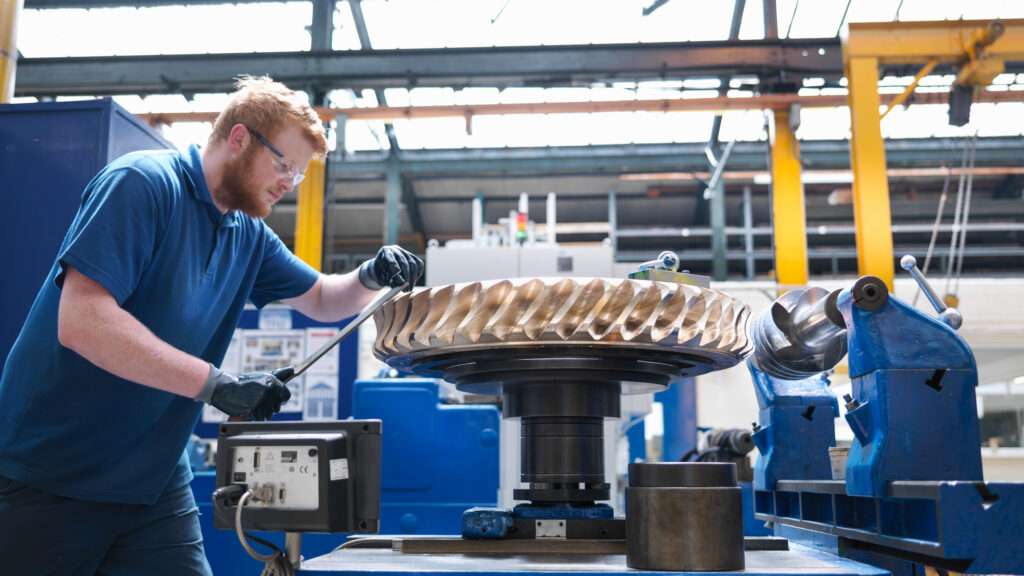WASHINGTON — The Coalition for a Prosperous America (CPA) today announced that the U.S. Private Sector Job Quality Index (JQI) is now 83.59, essentially flat with only a 0.01% increase compared to last month. Meanwhile, the overall October 2024 Jobs Report from the government’s Bureau of Labor Statistics showed only 12,000 jobs added in October. This figure shows extremely low employment gains in October, the lowest since December 2020 amid COVID induced losses. The poor job growth is partially attributed to the impact of the dual hurricanes of Helene and Milton and the extended strike by Boeing employees. However, even with the hurricanes and strikes in mind, economists still projected about 120,000 jobs added in October, far higher than the actual 12,000 jobs gained. Worse still, total private sector employment actually fell by 28,000 jobs. A bad sign for the current administration before the election.
The October jobs report also showed a continuing decline in U.S. manufacturing employment. Total manufacturing employment now stands at 12.87 million (down 46,000 in a single month and down 93,000 since January). Nearly all the manufacturing job losses were in Automotive manufacturing (44,400 job decline). In additional bad news for the economy, August’s job gains were revised downward from 159,000 to 78,000, and September’s gains from 254,000 to 223,000. This amounts to 112,000 fewer jobs gained than previously reported over the past two months. This all spells a gloomy outlook for the economy and almost guarantees the Federal Reserve will cut interest rates by 25-basis-points in November and another 25-basis-points in December.
The JQI, developed by CPA in partnership with other economists, divides the U.S. private sector nonmanagement labor force of 109.6 million employees into 16 sectors and 164 subsectors to evaluate economic trends in national employment. Sectors where the average weekly wage is above the average weekly wage for this group are termed “high-quality jobs” and those below are “low-quality jobs.” The data shows that for over 30 years the U.S. economy has created more low-quality jobs than high-quality.
The October JQI remained essentially unchanged. High quality jobs saw slightly better employment gains, while weekly wages increased slightly more among low quality jobs. The biggest driver of high-quality job gains was from Hospitals (adding 16,100 jobs in September). Other sectors with major job gains were Residential building construction (up 5,000), Building finishing contractors (up 5,000), and Outpatient care centers (up 4,700). However, these job gains were slightly muted by job losses for Other professional, scientific, and technical services (down 5,300 jobs), Nonresidential building construction (down 4,100), Transportation equipment manufacturing (down 2,700), and Architectural, engineering, and related services (down 2,700).
Among low-quality jobs, September employment gains were strongest for Individual and family services (up 18,300), Home health care services (up 14,600), and Full-service restaurants (up 7,600). However, some low-quality job sectors also experienced worse job losses. These include Employment services (down 11,400 jobs), Warehousing and storage (down 8,900), and Amusement, gambling, and recreation industries (down 6,500).
Manufacturing jobs experienced a total decline of 4,000 jobs in September, with higher losses in the high-quality jobs category. Among the worse hit were Transportation equipment manufacturing (down 2,700), Fabricated metal product manufacturing (down 2,300), and Primary metal manufacturing (down 1,400). This was somewhat helped by high-quality manufacturing job gains in Computer and electronic product manufacturing (up 3,900) and Chemical manufacturing (up 2,500). High-quality manufacturing jobs did experience a rise in weekly wages, however. The biggest gains were seen in Chemical manufacturing (up 2.1%) and Nonmetallic mineral product manufacturing (up 1.8%). Paper manufacturing saw the worst loss in weekly wages, declining 0.7%.
Low-quality manufacturing jobs saw roughly flat employment growth in September, with gains in areas such as Textile product mill manufacturing (up 1,000 jobs) being equaled out by losses in sectors like Furniture and related product manufacturing (down 700 jobs). Meanwhile, wages for low-quality manufacturing jobs fell. The only sector to see a rise in weekly wages was Printing & related manufacturing (up 0.9%). This was far outweighed by wage losses, with the hardest hit being Textile product mill manufacturing (down 2.2%) and Apparel manufacturing (down 1.8%).
Overall September wage growth was slightly positive, however. Among high-quality jobs, Agencies, brokerages, and other insurance related activities saw a 2.2% wage increase. And the highest wage losses were minor, with Automobile dealers seeing a 0.2% decline. The story is similar for low-quality job wage growth. Skilled nursing care facilities, Limited-service restaurants, and Traveler accommodation all saw weekly wage growth above one percent (1.41%, 1.18%, and 1.02% respectively). This overshadowed the more minor wage losses seen in Warehousing and storage as well as Home health care services (down 0.63% and 0.37% respectively).
Figure 1. Job Quality Index 1990-2024













